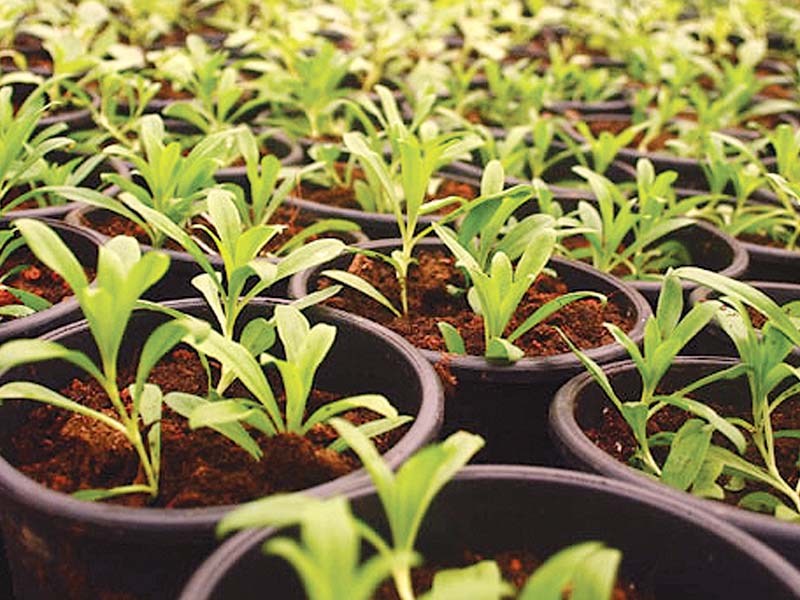
Yellowing leaves or pale flowers may point towards something being wrong with your green friends. As compiled from Good Housekeeping magazine and gardeningknowhow.com, here are a number of reasons that might be compromising the health of your plants.
When they’re brown and crunchy
The plant is: Thirsty
Give your greenery a new chance on life by watering until the soil is moist, but not overflowing or saturated. Liza Wheeler, plant expert and blogger at Good to Grow, suggests that there’s often an interval between the problem at hand and the leaves changing colour. But that doesn’t mean you can’t fix the issue. As soon as you notice crispy leaves, begin using this watering method. Also, don’t discard your used teabags and place them on top of the plant’s soil. This will help your plant absorb nutrients more readily.
When the leaves are absent
The plant is: Malnourished
“Plants won’t put out new growth if their diet and water needs aren’t met,” Wheeler explains. If your plant is looking a little on the meagre side, has lost leaves in the past few weeks and the stems look frail, you need to water your plant more often. If a plant hasn’t changed much in terms of growth since you bought it, you might need to water it more diligently. Consider making holes in your clay pot as this allows better aeration, leaving the pot to sit in a dish to catch overflow and allow the roots to absorb the extra water when needed.
When they’re yellow on the edges
The plant is: Overwatered or has damaged roots
Tovah Martin, garden expert and author of The Indestructible Houseplant, attributes the sudden yellowing and the ombré look to overwatering. “Water less frequently but don’t withhold water entirely,” she recommends. Obviously, your plant still needs a drink, but it doesn’t need to be swamped with water. The yellowing could also result from damaged roots … roots that are compacted too tightly in the container or nutrient deficiencies. These things can be corrected by either repotting with the help of a gardener if the pot is too big or adding fertiliser.
When they’re unusually pale
The plant is: Hungry
“You should perhaps provide more frequent fertiliser,” Martin suggests. For instance, if you noticed the leaves of, say, your hibiscus plant looking pale, it might need more iron. Martin also advises transferring the plant to a larger container when you spot paleness. But the promotions should be gradual. You can increase the container size by two inches at a time. If the plant is already in a large pot, consider utilising your used coffee grounds to feed your leafy friends. They’re best at nourishing soil.
When they’re leaning to the side
The plant is: Desperate for some sunlight
Just like how office workers get cranky and irritable from a lack of natural light, so do sun-loving plants. Martin recommends relocating the pot to a sunny window if your plant seems to be changing the direction of its growth to the side, or maybe re-plant it outdoors if you have space. If your view is getting blocked with your plant’s new location, it might be time to gift the sun-starved plant to a responsible friend with well-lit windows.
When they’re misshapen or discoloured
The plant is: Drowning with excess watering
“Overdoing on watering is the number one killer of houseplants,” Wheeler says. It’s not just a heavy-handed approach to the watering can that does it either. Check to make sure that your plant pot has satisfactory drainage. A repurposed vessel that doesn’t have holes in the bottom might mean too much water is holed up inside. Once the plant is repotted into a better ventilated pot, with holes at the bottom, just add water at decent rates and make sure you watch the plant to see any developments. Improvements should be seen in a week or two.
When they’re developing holes in them
The plant is: Infested by pests or insects
If you notice sudden holes on leaves or if they’re turning yellow despite adequate watering and fertiliser, you might want to look for some sort of pest infestation. Different bugs like different plants and if your leaves look damaged, you might have some bugs on the plant causing this mutilation. There are insecticides that are safe to use on houseplants to get rid of infestations, but be careful if you have pets at home that might get at the plant, so that they don’t get ill. Neem oil or leaves are one of the safest insecticides to use and will not harm you, your children or your pets.
By: Umnia Shahid
Published in The Express Tribune, September 3rd, 2015.
Like Life & Style on Facebook, follow @ETLifeandStyle on Twitter for the latest in fashion, gossip and entertainment.

















COMMENTS
Comments are moderated and generally will be posted if they are on-topic and not abusive.
For more information, please see our Comments FAQ